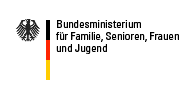Compatibility
Compatibility
The topics of compatibility of job and family and of work-life balance are only slowly being taken up as an active task in staff management. Interests outside work are largely ignored in traditional staffing policy, especially when a corporate culture oriented to the male norm dominates. Here, it is usually assumed that the staff member – female and male – is fully available and all social reproduction activities are taken care of externally (whether by private services or by another person in the background). As a consequence, many jobs (and not only at management level) are conceived as 1.5 person jobs.
Staff members with family responsibilities thus have a compatibility problem, especially as in many parts of West Germany there are no adequate child day care facilities geared to working hours. The individual, especially the individual woman, is faced with the decision: job and career or family and children, and she can simply forget individual choice. This process is reinforced by gender stereotypes in society and by a corporate image that is one-sidedly oriented to male careers.
Staff development that is also oriented to external needs can contribute to enhancing the attractiveness of a corporation or an organization for highly qualified staff – female and male. Real chances for decisions are opened up for individual persons and individual career paths are made possible. This significantly increases loyalty to the corporation, work motivation and attractiveness for qualified young people joining the workforce. As polls confirm (e.g. The Shell Youth Study in 2002), most young people want compatibility of career and family.
It is not only staff who benefit from a staff policy that is oriented to compatibility; organizations and corporations can also improve their performance and reduce their costs. One possible advantage is that staff fluctuation stays low and central knowledge of the organization continues to be available to the organization even after periods spent bringing up families. This can keep the costs of staff recruitment and training low, which is of special importance for small and medium-sized companies. The Internet portal “Mittelstand und Familie” [German] offers support in this for small and medium-sized companies. Investments in staff training generally yield more if staff remain with the company or organization for a long time. Moreover, corporations and organizations get the benefit of experience and skills acquired by staff during periods of family leave.
Suitable measures include:
Staff members with family responsibilities thus have a compatibility problem, especially as in many parts of West Germany there are no adequate child day care facilities geared to working hours. The individual, especially the individual woman, is faced with the decision: job and career or family and children, and she can simply forget individual choice. This process is reinforced by gender stereotypes in society and by a corporate image that is one-sidedly oriented to male careers.
Staff development that is also oriented to external needs can contribute to enhancing the attractiveness of a corporation or an organization for highly qualified staff – female and male. Real chances for decisions are opened up for individual persons and individual career paths are made possible. This significantly increases loyalty to the corporation, work motivation and attractiveness for qualified young people joining the workforce. As polls confirm (e.g. The Shell Youth Study in 2002), most young people want compatibility of career and family.
It is not only staff who benefit from a staff policy that is oriented to compatibility; organizations and corporations can also improve their performance and reduce their costs. One possible advantage is that staff fluctuation stays low and central knowledge of the organization continues to be available to the organization even after periods spent bringing up families. This can keep the costs of staff recruitment and training low, which is of special importance for small and medium-sized companies. The Internet portal “Mittelstand und Familie” [German] offers support in this for small and medium-sized companies. Investments in staff training generally yield more if staff remain with the company or organization for a long time. Moreover, corporations and organizations get the benefit of experience and skills acquired by staff during periods of family leave.
Suitable measures include:
- changing the work organization e.g. by introducing or expanding tele-working; increased use of part-time working (also for men and for management staff); opportunities for sabbaticals
- financial support such as one-off payments after birth or child allowances
- support of persons on parental leave (usually women) with regular information on developments in the company and participation in training measures
- support in child care, the spectrum extending from works kindergarten amenities to child care places in external amenities and short-term in-house child care facilities
- modernizing the corporation’s guiding principle and actively changing the corporate culture – a workforce that is one-sidedly oriented to career is less suited to create long-term success because central values may get lost
- development of management skills – only if management actively supports the process does an orientation to compatibility have any chance of success.
Literature and links
- Bundesministerium für Familie, Senioren, Frauen und Jugend: 1. Datenreport zur Gleichstellung von Frauen und Männern in der Bundesrepublik Deutschland – Kapitel 5: Vereinbarkeit von Familie und Beruf, erstellt vom Deutschen Jugendinstitut in Kooperation mit dem Statistischen Bundesamt, Berlin 2005.
- Beckmann, Petra/Kurtz, Beate: Erwerbstätigkeit von Frauen. Die Betreuung der Kinder ist der Schlüssel; IAB Kurzbericht Nr. 10/15.6.2001.
- Bertelsmann Stiftung: Familienfreundliche Gesellschaft.
- BMFSFJ/Bertelsmann Stiftung: Familienfreundliche Arbeitswelt und Unternehmenskultur - für eine neue Balance.
- BMFSFJ: 10 gute Gründe. Familienfreundlichkeit lohnt sich, ...
- DIHK/BMFSFJ/Beruf&Familie: Familienorientierte Personalpolitik. Checkheft für kleine und mittlere Unternehmen; 2004.
- DIHK/BMFSFJ/Bertelsmann Stiftung: Internetportal Mittelstand und Familie.
- IAIZ: Auch Männer haben ein Vereinbarkeitsproblem – Zusammenfassung der Pilotstudie; 2004.
erstellt von Administrator
—
zuletzt verändert:
02.01.2010 20:07






